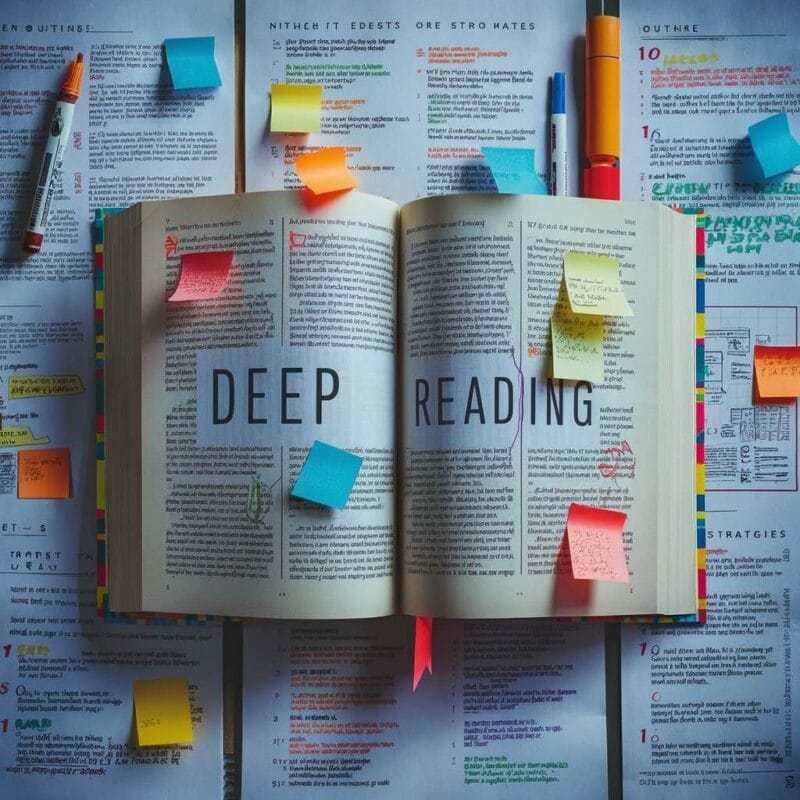- A book hangover is the lingering mental and emotional hold a book exerts after it ends, supported by neurological changes in brain regions tied to language, sensory processing, and memory.
- Immersive reading can trigger narrative transportation, mirror-neuron activity, dopamine-driven anticipation cycles, and autobiographical-style memory encoding, making fictional worlds feel enduring and real.
- It appears more often in:
– Deep readers with strong focus and emotional investment
– Works with rich world-building or unresolved endings - Common signs include:
– Reading slump: difficulty starting new books
– Emotional displacement: moods shaped by the book’s tone
– Cognitive preoccupation: recurring mental return to the story - A book hangover can enrich literary engagement but also drain energy, disrupt focus, and slow reading momentum. Recovery strategies include:
– Switching to a different genre or form
– Engaging in creative reflection or discussion
– Taking deliberate breaks to reset attention and mood
It begins the moment the last sentence is read. You close the book, sit still for a while, and realize that the world inside those pages has not released you. You try to think about something else (the week ahead, the sound of traffic outside, what to cook for dinner), but the mind drifts back to scenes, voices, and settings that now feel more vivid than the room around you. This is a book hangover, a term that has slipped into common language to describe the lingering paralysis that follows a work of deep and absorbing reading.
It extends beyond simple affection for a well-told story. It is a state in which emotional focus, mental energy, and even mood remain tethered to a text that has already ended. In book clubs and online communities, the phrase often carries a mix of humor and sincerity. The humor comes from its resemblance to the aftermath of overindulgence; the sincerity comes from knowing the condition is real, deeply felt, and disruptive enough to change reading habits for days or weeks.
What makes a book hangover more than a casual side effect of reading is its measurable imprint on the brain and behavior. Advances in cognitive neuroscience have shown that reading is not a passive act. When the right conditions are met, e.g., the right story, the right reader, the right moment in life, a book can alter neural patterns, sustain emotional states, and leave a residue that is part memory, part mood, and part intellectual fixation.
Mechanisms of Immersion: When a Book Imprints on the Brain
One influential study from Emory University in 2013 measured brain activity before, during, and after participants read a gripping novel. It found that after several days of reading, participants exhibited heightened connectivity in two key regions: the left middle temporal gyrus and angular gyrus (linked to language and narrative processing), as well as the sensorimotor cortices (associated with embodied simulation). Remarkably, these changes persisted for up to five days after finishing the novel. The brain seemed to continue operating in the mode established by the reading, as if still partially immersed in the fictional environment.
Reading certain sensory-related words can indeed activate corresponding sensory brain regions. For example, fMRI research shows that encountering odour-related words such as “cinnamon” elicits activity in the primary olfactory cortex, including the piriform cortex and amygdala. Other studies demonstrate that processing words associated with taste, touch, or other sensory modalities likewise engages the relevant neural regions, even without any direct physical stimulus present.
Together, these findings indicate that the sensory cortices do not remain dormant during reading. Instead, the brain simulates sensory experiences based solely on vivid, descriptive language, supporting the idea that immersive narratives can activate sensory processing areas even when no actual stimuli are present.
Narrative Transportation
Psychologists describe the deep engagement with a story as narrative transportation. In this state, a reader does not simply follow a plot but is mentally and emotionally relocated into it. Studies, such as Emory’s, have found that when readers report high levels of transportation, they display reduced awareness of their physical surroundings and a greater tendency to internalize the beliefs, emotions, and perspectives of the characters.
This suggests that the mental state we call a book hangover is not purely emotional but has a neurological basis. The brain retains traces of the narrative environment, sustaining patterns of thought and imagery beyond the act of reading.
Sensory and Motor Simulation
The same Emory study aligns with other research showing that vivid descriptive passages can trigger activity in the brain’s sensory cortices. The other studies cited above claim that reading about the smell of cinnamon can activate olfactory regions; other sensory modalities such as taste or touch can likewise stir somatosensory areas. This sensory and motor simulation helps explain why certain books feel so physically present in memory.
When a character moves through space, the brain’s motor regions can light up as if the reader were performing the action themselves. The hangover lingers because the brain has experienced the fictional events in embodied terms, making them harder to discard as “just a story.”
Emotional Architecture of a Book Hangover
The emotional architecture of a book hangover arises from the interplay between a reader’s emotional engagement and the brain’s capacity to sustain that engagement well beyond the act of reading. Certain stories do not conclude neatly in the mind; their emotional currents continue to move beneath conscious thought, shaping mood, attention, and even perception. This persistence arises from mechanisms that bind the reader’s feelings to the imagined events and characters.
Emotional Contagion and Mirror Neurons
Humans possess a remarkable ability to internalize the emotions of others. This is partly due to mirror neurons, which fire both when we perform an action and when we observe someone else doing it. In literature, this mechanism operates through imagined experience. We do not see a character’s grief, but we process it as if it were unfolding in our own lives.
When a novel or memoir sustains a powerful emotional tone, whether it is the weight of loss, the exhilaration of triumph, or the pull of romantic tension, those emotions can leave a chemical trace. Neurotransmitters associated with stress, joy, or empathy do not vanish instantly. They decline gradually, which means that even after the story ends, the emotional residue remains.
Dopamine and the Reward Cycle
Part of the psychological pull of reading comes from the brain’s reward circuitry. Dopamine release occurs both during moments of pleasure and in the build-up toward them, which is why anticipation within a story can be as stimulating as the resolution itself. This dynamic keeps the reader engaged through cycles of expectation, each one reinforcing the pull of the narrative. A tightly plotted story keeps the reader in a state of ongoing anticipation: each chapter becomes a reward pathway in miniature.
The end of the book marks the end of that cycle. For readers who have invested heavily, this sudden cessation can create a form of withdrawal. It is not addiction in the clinical sense, but it shares the pattern of a pleasurable stimulus being cut off, leaving the brain momentarily dissatisfied.
Memory Encoding and Cognitive Landmarks
The memories formed during immersive reading can embed themselves within the brain’s autobiographical memory network. If the book was read during a significant period in life, its content and context may become intertwined. A reader may remember not only what happened in the novel but also where they were sitting, the weather outside, or the mood of the day.
This fusion of story and self can make the end of a book resemble a minor form of bereavement. The mind may register the loss of a fictional world as the closing of a chapter that has been stored with the same vividness as personal memory.
Reader Susceptibility: Why Some Are More Affected Than Others
The intensity of a book hangover can vary greatly from one reader to another, shaped by individual reading habits, cognitive styles, and emotional responsiveness. Factors such as depth of engagement, capacity for sustained attention, and openness to imaginative immersion influence how strongly a book’s influence endures. Certain readers are predisposed to carry the imprint of a text well beyond its conclusion, while others transition more readily to new material.
The Deep Reading Profile
Not all readers are equally prone to book hangovers. Deep readers (those who engage with texts in a sustained, undistracted way) are more likely to experience the aftereffect. They move through a book slowly enough to absorb its stylistic nuances, spend time reflecting between chapters, and form strong attachments to characters and ideas.
Deep reading strengthens narrative transportation and makes the transition back to everyday thought more abrupt. It is the difference between wading in a shallow pool and surfacing from deep water.
Genre and Narrative Structure
Certain genres create stronger hangovers because they build more complete internal worlds. Epic fantasy and science fiction often involve intricate world-building that requires readers to learn entire systems of geography, politics, and culture. Historical novels can anchor themselves so vividly in time and place that the reader mentally inhabits another era.
Narrative structure also plays a role. Cliffhanger endings can prolong the mental loop of unresolved anticipation. Conversely, an ending that offers full closure can still leave a reader suspended if it resolves the plot but leaves emotional threads deliberately frayed.
Manifestations of a Book Hangover
A book hangover does not present itself in a single, uniform way. Its presence can be traced through changes in reading patterns, emotional states, and even thought processes that extend into daily life. Some effects are subtle, such as a mild reluctance to begin a new book, while others are more pronounced, including shifts in mood or persistent mental preoccupation. Understanding these manifestations clarifies why a book hangover can feel disruptive and yet also signal the depth of a reader’s engagement.
Reading Slump
One of the most recognizable signs of a book hangover is the reading slump. This occurs when attempts to start another book are met with disinterest or dissatisfaction, regardless of the new book’s quality. The previous work becomes the benchmark against which all others are unconsciously measured, and few can compete with the immediacy of a text still fresh in the mind. Even books that would normally appeal may be abandoned after a few pages because they fail to reproduce the intensity of the prior reading.
This slump can be prolonged by the emotional investment placed in the finished book. Readers who have built strong attachments to its characters or ideas may resist moving on, driven by an unwillingness to replace what still feels present. The mind measures each potential new read against the immersive experience of the previous one, often rejecting it before it has the chance to establish its own grip. In some cases, the slump continues until the original book’s hold begins to fade; in others, it ends only when a dramatic change in genre, tone, or subject matter provides a complete shift in focus.
Emotional Displacement
Emotional displacement often occurs when the events or atmosphere of a book align with the reader’s own experiences or concerns. A narrative that mirrors personal challenges can intensify its aftereffects, as the emotions stirred by the story blend with those already present. This blending can enhance empathy and reflection but may also heighten vulnerability to mood changes that would not otherwise have been as pronounced.
A book hangover can alter the emotional climate of a reader’s routine. When a novel sustains a particular mood, whether it is marked by melancholy, hope, tension, or wonder, that mood can persist even after finishing the book. This carryover effect may be subtle, influencing responses to unrelated events, or it may be pronounced enough to shift overall perspective for a time.
Cognitive Preoccupation
The mental afterimage of a book can be as influential as its emotional residue. Cognitive preoccupation manifests when the reader continues to replay scenes, revisit dialogue, or mentally extend the story through speculation and imagined alternatives. This ongoing engagement can intrude upon focus in unrelated tasks, which draws the mind back to the fictional world without deliberate intent.
Such preoccupation is reinforced when a book presents unresolved tensions or thematic ambiguities. The mind’s natural inclination to seek closure fuels repeated playbacks to the material, even in the absence of new information. While this can be creatively stimulating, i.e., leading to deeper interpretation or new insights, it can also slow the process of mentally disengaging from the text, prolonging the book hangover.
Productive and Disruptive Sides
The effects of a book hangover can be interpreted through two contrasting lenses. On one side, it can serve as evidence of a work’s lasting influence, inspiring further thought, discussion, and creative response. On the other, it can hinder reading momentum, disrupt concentration, or prolong emotional states that interfere with daily routines. Examining both the productive and disruptive sides reveals how the same lingering impact that enriches a reader’s engagement with literature can also complicate the transition back to ordinary cognitive and emotional patterns.
Upsides
- Deep appreciation of craft – The inability to move on can signal that the work achieved an extraordinary fusion of style, structure, and thematic resonance.
- Inspiration for creative work – Lingering attachment can inspire essays, artistic responses, or even original fiction.
- Expansion of emotional range – Books that leave a lasting mark can increase empathy, broaden moral perspective, and refine aesthetic taste.
Downsides
- Emotional drain – Prolonged exposure to intense emotional states can sap energy.
- Distraction from present tasks – Cognitive preoccupation can interfere with focus on work, study, or social interaction.
- Loss of reading momentum – Extended slumps can reduce the variety and volume of reading over time.
Strategies for Recovery Without Losing the Value
A book hangover does not have to end in avoidance of reading or the loss of the benefits it brings. The aim is not to erase the lingering influence of a powerful book but to manage it in a way that preserves its value while restoring openness to new material. Practical strategies can help maintain the intellectual and emotional gains from the last book while easing the transition toward fresh reading experiences.
Switch Genre or Form
Moving into a different genre or literary form can prevent constant comparisons to the previous work. For example, shifting from a long, emotionally charged novel to an essay collection, a short poetry volume, or a concise work of nonfiction provides a change in tone and structure. This difference can help the new material establish its own space without being overshadowed by the lingering impressions of the earlier book.
In addition, exploring unfamiliar literary territory can broaden reading horizons. The contrast in style, pace, or subject matter can act as a reset for the reader’s expectations, making it easier to appreciate the new work on its own terms rather than through the lens of what has just been finished.
Engage Creatively
Transforming lingering impressions into art or writing can externalize the experience, freeing mental space while preserving its impact.
Processing a book’s aftereffects through creative activity can transform its lingering energy into a productive outlet. Writing a reflective review, creating art inspired by its imagery, or discussing it with others helps externalize the thoughts and emotions it left behind. By giving them form outside the mind, the book’s presence becomes less consuming.
This kind of engagement can also deepen appreciation for the work’s craft and ideas. Through creative interpretation, a reader can examine specific elements such as style, structure, and symbolism, which may have been felt intuitively during reading but not yet articulated. This can make the eventual shift to a new book feel less like leaving something unfinished.
Deliberate Pauses
Sometimes the best remedy is to step away from reading entirely for a short while. This allows the emotional and cognitive traces of the last book to settle without being overwritten too quickly. Taking a short break from reading can help recalibrate focus and mood. This pause does not signal a loss of momentum but serves as a way for the emotional and cognitive traces of the previous book to settle naturally.
Activities unrelated to reading, such as walking, cooking, or attending to social commitments, can create enough distance to restore mental balance. Even brief pauses can renew anticipation for reading. Allowing time for the last book’s influence to fade slightly can make the next choice feel more inviting, reducing the risk of abandoning it early due to comparison or lack of emotional readiness.
Further Reading
In Search of Book Hangovers by Jamie Canaves, Book Riot
Book Hangover: Real or Myth? by abbiezandersromance.com
What Books Have Given You a “Book Hangover”? by Mary Daniels Brown, Notes in the Margin
Is it normal to be so sad after finishing a book that you still can’t move on, even after a while?




